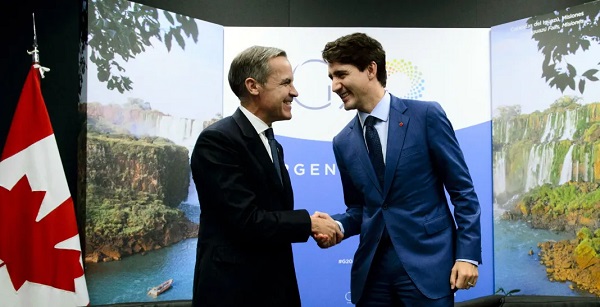Alberta
Cenovus CEO Pourbaix to step down, become executive chair; Jon McKenzie to be new CEO
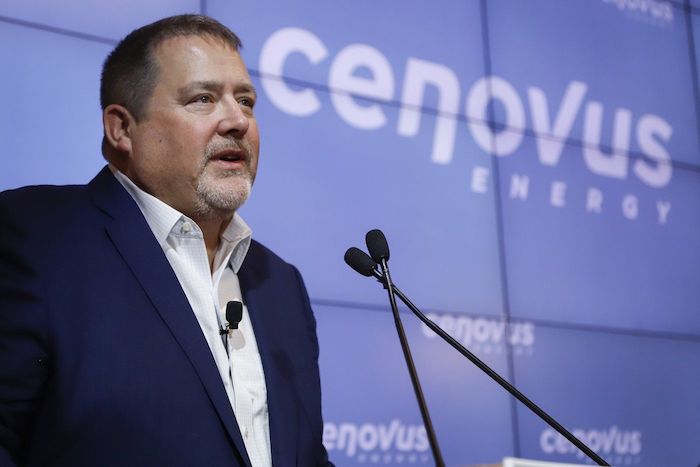
By Amanda Stephenson in Calgary
Cenovus Energy Inc. chief executive Alex Pourbaix will step down from his CEO role later this year to devote more time to his evolving role as an outspoken champion of Canada’s oilsands industry and its decarbonization ambitions.
The Calgary-based energy company said Thursday that Pourbaix, who has led Cenovus since November of 2017, will become executive chair, while chief operating officer Jon McKenzie will become CEO in a transition that will take place after the company’s annual meeting set for April 26.
On a conference call with analysts, Pourbaix said the change will allow him to focus his attention on external efforts, including working with all levels of government to advance the oil and gas industry’s decarbonization goals.
Cenovus is a member of the Pathways Alliance, a group of oilsands companies that together have pledged to spend $24.1 billion to reduce greenhouse gas emissions from oilsands production by 22 million tonnes by 2030.
Pourbaix has been one of the most outspoken advocates of the Pathways plan and has been heavily involved in the group’s efforts to secure federal and provincial support for a massive proposed carbon capture and storage transportation line that would capture carbon dioxide from oilsands facilities and transport it to a storage facility near Cold Lake, Alta.
“Next to safety, there is nothing more important to Cenovus and our industry than reaching a durable solution between government and industry to achieve our emission aspirations,” Pourbaix said.
“Once I move to the executive chair position, I intend to dedicate even more time to this pivotal external issue for both Cenovus and our industry.”
Pourbaix was one of the prominent industry voices who successfully lobbied the federal government for the creation of an investment tax credit for carbon capture and storage projects in Canada, which was announced in the federal budget last year.
However, he has also been vocal in his stance that more government support is needed before companies will pull the trigger on investing in carbon capture. Pourbaix and other oil and gas sector leaders have said Canada needs to do more to stay competitive with the U.S. and its Inflation Reduction Act, which they say offers more incentives for the technology.
Environmental groups have been critical of the industry’s lobbying for more support, given the record profits oil and gas companies earned in 2022 due to sky-high commodity prices.
Cenovus earned $6.45 billion in 2022 compared with $587 million in 2021.
Pourbaix said Thursday that he wants to see the industry, the federal government, and the Alberta government come to some type of “durable” agreement as to what this country’s emissions reduction ambitions are. He added that a structure needs to be put in place to make sure the oil and gas sector can achieve those goals while still remaining economically viable.
“I think it’s just incredibly important for Canadians that we find a way for this industry to be able to continue to thrive, and the way we’re going to do that is by constantly improving our environmental leadership,” Pourbaix said.
Alberta Premier Danielle Smith released the contents of a letter to Prime Minister Justin Trudeau Thursday in which she calls for the creation of a minister-led working group aimed at coming up with a coordinated CCUS federal-provincial incentive program.
Smith said Alberta is willing to coordinate a federal CCUS income tax credit with an expansion of the province’s current Alberta Petrochemicals Incentive Program (APIP) to include carbon capture projects.
But she said Alberta will not cooperate if Ottawa continues to push ahead with introduction of its proposed Just Transition legislation, or with a pledged federal cap on emissions from the oil and gas sector.
The announcement of the change at Cenovus’ executive level came as the company reported a fourth-quarter profit of $784 million or 39 cents per diluted share for the quarter ended Dec. 31 compared with a loss of $408 million or 21 cents per diluted share a year earlier.
Revenue in the quarter was $14.1 billion, up from $13.7 billion in the last three months of 2021.
Cenovus reported total upstream production amounted to 806,900 barrels of oil equivalent per day for its most recent quarter, down from 825,300 a year earlier.
Total downstream throughput was 473,500 barrels per day, up from 469,900 in the fourth quarter or 2021.
On the call with analysts, McKenzie — who joined Cenovus in 2018 from Husky Energy as chief financial officer, and was instrumental in Cenovus’s merger with that company — said he expects a smooth transition to the CEO role, with little change in corporate focus.
“Both Alex and I have our fingerprints all over the corporate strategy, and we developed this in a partnership together with the rest of our leadership team,” McKenzie said.
Pathways Alliance president Kendall Dilling said in an emailed statement Thursday that he is grateful Pourbaix will continue to devote his energy to the group’s ambitions.
“Alex’s contributions to not only the creation of Pathways Alliance, but to our continued efforts to decarbonize our industry’s production, have been monumental,” Dilling said.
This report by The Canadian Press was first published Feb. 16, 2023.
Companies in this story: (TSX:CVE)
Alberta
Alberta can’t fix its deficits with oil money: Lennie Kaplan

This article supplied by Troy Media.
Alberta is banking on oil to erase rising deficits, but the province’s budget can’t hold without major fiscal changes
Alberta is heading for a fiscal cliff, and no amount of oil revenue will save it this time.
The province is facing ballooning deficits, rising debt and an addiction to resource revenues that rise and fall with global markets. As Budget 2026 consultations begin, the government is gambling on oil prices to balance the books again. That gamble is failing. Alberta is already staring down multibillion-dollar shortfalls.
I estimate the province will run deficits of $7.7 billion in 2025-26, $8.8 billion in 2026-27 and $7.5 billion in 2027-28. If nothing changes, debt will climb from $85.2 billion to $112.3 billion in just three years. That is an increase of more than $27 billion, and it is entirely avoidable.
These numbers come from my latest fiscal analysis, completed at the end of October. I used conservative assumptions: oil prices at US$62 to US$67 per barrel over the next three years. Expenses are expected to keep growing faster than inflation and population. I also requested Alberta’s five-year internal fiscal projections through access to information but Treasury Board and Finance refused to release them. Those forecasts exist, but Albertans have not been allowed to see them.
Alberta has been running structural deficits for years, even during boom times. That is because it spends more than it brings in, counting on oil royalties to fill the gap. No other province leans this hard on non-renewable resource revenue. It is volatile. It is risky. And it is getting worse.
That is what makes Premier Danielle Smith’s recent Financial Post column so striking. She effectively admitted that any path to a balanced budget depends on doubling Alberta’s oil production by 2035. That is not a plan. It is a fantasy. It relies on global markets, pipeline expansions and long-term forecasts that rarely hold. It puts taxpayers on the hook for a commodity cycle the province does not control.
I have long supported Alberta’s oil and gas industry. But I will call out any government that leans on inflated projections to justify bad fiscal choices.
Just three years ago, Alberta needed oil at US$70 to balance the budget. Now it needs US$74 in 2025-26, US$76.35 in 2026-27 and US$77.50 in 2027-28. That bar keeps rising. A single US$1 drop in the oil price will soon cost Alberta $750 million a year. By the end of the decade, that figure could reach $1 billion. That is not a cushion. It is a cliff edge.
Even if the government had pulled in $13 billion per year in oil revenue over the last four years, it still would have run deficits. The real problem is spending. Since 2021, operating spending, excluding COVID-19 relief, has jumped by $15.5 billion, or 31 per cent. That is nearly eight per cent per year. For comparison, during the last four years under premiers Ed Stelmach and Alison Redford, spending went up 6.9 per cent annually.
This is not a revenue problem. It is a spending problem, papered over with oil booms. Pretending Alberta can keep expanding health care, education and social services on the back of unpredictable oil money is reckless. Do we really want our schools and hospitals held hostage to oil prices and OPEC?
The solution was laid out decades ago. Oil royalties should be saved off the top, not dumped into general revenue. That is what Premier Peter Lougheed understood when he created the Alberta Heritage Savings Trust Fund in 1976. It is what Premier Ralph Klein did when he cut spending and paid down debt in the 1990s. Alberta used to treat oil as a bonus. Now it treats it as a crutch.
With debt climbing and deficits baked in, Alberta is out of time. I have previously laid out detailed solutions. But here is where the government should start.
First, transparency. Albertans deserve a full three-year fiscal update by the end of November. That includes real numbers on revenue, expenses, debt and deficits. The government must also reinstate the legal requirement for a mid-year economic and fiscal report. No more hiding the ball.
Second, a real plan. Not projections based on hope, but a balanced three-year budget that can survive oil prices dropping below forecast. That plan should be part of Budget 2026 consultations.
Third, long-term discipline. Alberta needs a fiscal sustainability framework, backed by a public long-term report released before year-end.
Because if this government will not take responsibility, the next oil shock will.
Lennie Kaplan is a former senior manager in the fiscal and economic policy division of Alberta’s Ministry of Treasury Board and Finance, where, among other duties, he examined best practices in fiscal frameworks, program reviews and savings strategies for non-renewable resource revenues. In 2012, he won a Corporate Values Award in TB&F for his work on Alberta’s fiscal framework review. In 2019, Mr. Kaplan served as executive director to the MacKinnon Panel on Alberta’s finances—a government-appointed panel tasked with reviewing Alberta’s spending and recommending reforms.
Alberta
IEA peak-oil reversal gives Alberta long-term leverage

This article supplied by Troy Media.
The peak-oil narrative has collapsed, and the IEA’s U-turn marks a major strategic win for Alberta
After years of confidently predicting that global oil demand was on the verge of collapsing, the International Energy Agency (IEA) has now reversed course—a stunning retreat that shatters the peak-oil narrative and rewrites the outlook for oil-producing regions such as Alberta.
For years, analysts warned that an oil glut was coming. Suddenly, the tide has turned. The Paris-based IEA, the world’s most influential energy forecasting body, is stepping back from its long-held view that peak oil demand is just around the corner.
The IEA reversal is a strategic boost for Alberta and a political complication for Ottawa, which now has to reconcile its climate commitments with a global outlook that no longer supports a rapid decline in fossil fuel use or the doomsday narrative Ottawa has relied on to advance its climate agenda.
Alberta’s economy remains tied to long-term global demand for reliable, conventional energy. The province produces roughly 80 per cent of Canada’s oil and depends on resource revenues to fund a significant share of its provincial budget. The sector also plays a central role in the national economy, supporting hundreds of thousands of jobs and contributing close to 10 per cent of Canada’s GDP when related industries are included.
That reality stands in sharp contrast to Ottawa. Prime Minister Mark Carney has long championed net-zero timelines, ESG frameworks and tighter climate policy, and has repeatedly signalled that expanding long-term oil production is not part of his economic vision. The new IEA outlook bolsters Alberta’s position far more than it aligns with his government’s preferred direction.
Globally, the shift is even clearer. The IEA’s latest World Energy Outlook, released on Nov. 12, makes the reversal unmistakable. Under existing policies and regulations, global demand for oil and natural gas will continue to rise well past this decade and could keep climbing until 2050. Demand reaches 105 million barrels per day in 2035 and 113 million barrels per day in 2050, up from 100 million barrels per day last year, a direct contradiction of years of claims that the world was on the cusp of phasing out fossil fuels.
A key factor is the slowing pace of electric vehicle adoption, driven by weakening policy support outside China and Europe. The IEA now expects the share of electric vehicles in global car sales to plateau after 2035. In many countries, subsidies are being reduced, purchase incentives are ending and charging-infrastructure goals are slipping. Without coercive policy intervention, electric vehicle adoption will not accelerate fast enough to meaningfully cut oil demand.
The IEA’s own outlook now shows it wasn’t merely off in its forecasts; it repeatedly projected that oil demand was in rapid decline, despite evidence to the contrary. Just last year, IEA executive director Fatih Birol told the Financial Times that we were witnessing “the beginning of the end of the fossil fuel era.” The new outlook directly contradicts that claim.
The political landscape also matters. U.S. President Donald Trump’s return to the White House shifted global expectations. The United States withdrew from the Paris Agreement, reversed Biden-era climate measures and embraced an expansion of domestic oil and gas production. As the world’s largest economy and the IEA’s largest contributor, the U.S. carries significant weight, and other countries, including Canada and the United Kingdom, have taken steps to shore up energy security by keeping existing fossil-fuel capacity online while navigating their longer-term transition plans.
The IEA also warns that the world is likely to miss its goal of limiting temperature increases to 1.5 °C over pre-industrial levels. During the Biden years, the IAE maintained that reaching net-zero by mid-century required ending investment in new oil, gas and coal projects. That stance has now faded. Its updated position concedes that demand will not fall quickly enough to meet those targets.
Investment banks are also adjusting. A Bloomberg report citing Goldman Sachs analysts projects global oil demand could rise to 113 million barrels per day by 2040, compared with 103.5 million barrels per day in 2024, Irina Slav wrote for Oilprice.com. Goldman cites slow progress on net-zero policies, infrastructure challenges for wind and solar and weaker electric vehicle adoption.
“We do not assume major breakthroughs in low-carbon technology,” Sachs’ analysts wrote. “Even for peaking road oil demand, we expect a long plateau after 2030.” That implies a stable, not shrinking, market for oil.
OPEC, long insisting that peak demand is nowhere in sight, feels vindicated. “We hope … we have passed the peak in the misguided notion of ‘peak oil’,” the organization said last Wednesday after the outlook’s release.
Oil is set to remain at the centre of global energy demand for years to come, and for Alberta, Canada’s energy capital, the IEA’s course correction offers renewed certainty in a world that had been prematurely writing off its future.
Toronto-based Rashid Husain Syed is a highly regarded analyst specializing in energy and politics, particularly in the Middle East. In addition to his contributions to local and international newspapers, Rashid frequently lends his expertise as a speaker at global conferences. Organizations such as the Department of Energy in Washington and the International Energy Agency in Paris have sought his insights on global energy matters.
Troy Media empowers Canadian community news outlets by providing independent, insightful analysis and commentary. Our mission is to support local media in helping Canadians stay informed and engaged by delivering reliable content that strengthens community connections and deepens understanding across the country.
-

 Alberta16 hours ago
Alberta16 hours agoFrom Underdog to Top Broodmare
-
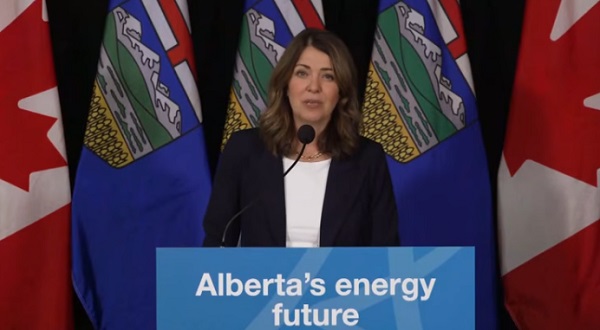
 Alberta2 days ago
Alberta2 days agoAlberta and Ottawa ink landmark energy agreement
-

 Energy2 days ago
Energy2 days agoPoilievre says West Coast Pipeline MOU is no guarantee
-

 International2 days ago
International2 days agoAfghan Ex–CIA Partner Accused in D.C. National Guard Ambush
-
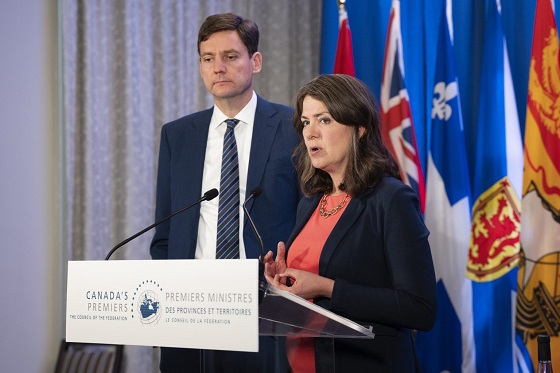
 Alberta2 days ago
Alberta2 days agoWest Coast Pipeline MOU: A good first step, but project dead on arrival without Eby’s assent
-
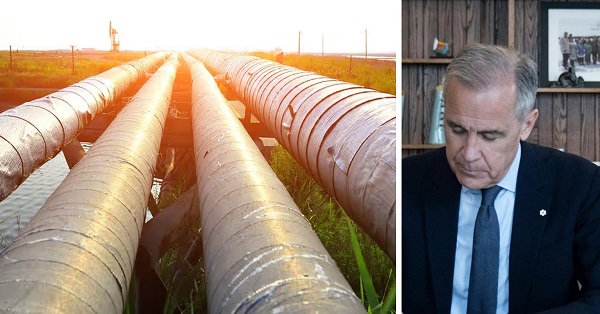
 Energy2 days ago
Energy2 days agoWill the New West Coast Pipeline MoU Lead to Results? Almost Certainly Not According to AI
-
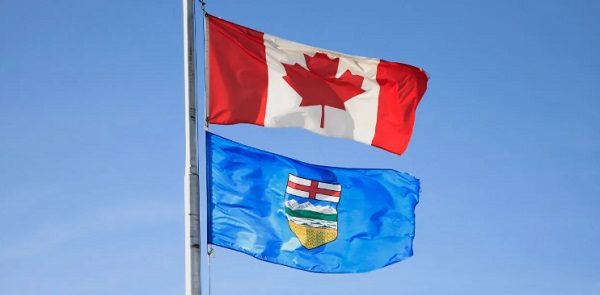
 Alberta2 days ago
Alberta2 days agoCarney forces Alberta to pay a steep price for the West Coast Pipeline MOU
-

 Carbon Tax2 days ago
Carbon Tax2 days agoCanadian energy policies undermine a century of North American integration




